Welcome back to Chess in Small Doses, a Substack about adult improvement in chess. Today I’m excited to start a debate about tactics. What is the best way to improve? How should we adults go about training? I performed an experiment on myself and did just basic simple tactics for the last month. Thanks to the Tetris Effect, I added 180 ELO in 30 days. Let’s get into it.
Starting A Debate
Recently I wrote a summary of what I learned from listening to Jacob Aagaard on several podcasts. He advised that club level players should use “mass repetition” of “basic, simple tactics”to improve. When doing the puzzles he advised removing distractions while solving and to write down every line you can see. If the answer isn’t among the lines you wrote, then you got it wrong.
I was particularly struck by this advice, because it flew in the face of what I had heard before. I knew that deliberate practice for tactics was doing puzzles just at the edge of your ability. If you’re getting more than 70%-80% correct, it’s too easy. If you’re getting <30% correct, it’s too challenging. Yet that’s not at all what Aaggard was advising.
Aaggard’s point was that in every game we will face at least the threat of simple tactics. It’s much easier for our brains to spot tactics and calculate when we’ve repeated the patterns many times. High volume repetition with good focus reinforces pattern recognition. This is the theory behind The Woodpecker Method and De La Maza’s Rapid Chess Improvement. Interestingly enough, this was also the point of CM Azel Chua in Calculation: A Complete Guide For Tournament Players. Our minds aren’t capable of looking for checks, captures, and threats in every position on every move. Instead we need to train our intuition to see these things through repetition. We need to practice simple things until they become second nature.
This is not how I was initially trained or the general advice of most trainers. They tend to stick with the deliberate practice method. To be fair, there’s no hard evidence yet in chess for training intuition, just anecdotal evidence. There is hard (but debated) evidence in favor of deliberate practice. I think there’s room for both, but let’s have the debate. Which is “better”? And who should use which technique?
#1) White to move and win material (solution at the end)
An Experiment
If you’re not familiar with my back story (and why would you be), basically I used the Steps Method books, coaching with CM Han Schut, and a weekly Lichess 45/45 game to gain some 200 ELO over 1-2 years. By the end of it, I was solving puzzles in Step 5 at or above the 70% mark. This was very much the deliberate practice method and it did work for me. My games however were a different thing. I am living proof that there is a big difference between being able to solve hard tactical puzzles and playing well. The Steps Method essentially promises that Step 5 equates with an ELO up to 1900. Yet my performance was around a 1500-1600 USCF level. There was a performance gap that I think many people can likely relate to. The Steps Method is an excellent resource and I use it still, but I was confused as to why the gap should be there.
I did an experiment with myself as the before and after control. I went from deliberate practice to basic, simple tactics for a whole month. The protocol was to write down every line I could see for each puzzle. I’d leave time at the end to check my answers and notice if I missed a line. If I didn’t write it down, I got it wrong.
Initially I did Step 3 and Step 4 puzzles twice a week. After one week I felt I needed more frequency, so I started doing “easy mode” tactics 6 days a week but for about 20 minutes at most (I only have so much time for chess each day). Eventually I switched to doing whole chapters of Chess Tactics for Champions in under 20 minutes. The source of tactics didn’t matter, just that I was doing them with focus, writing down lines.
After several weeks of this protocol, a strange thing happened to me. I gained 180 ELO in my Chess.com blitz rating in just under 30 days.
For comparison, here’s my lifetime Blitz rating graph with Chess.com. You can see that while I flirted with 1600 only once, my general rating range was around 1300-1500.
Easy Button
So what gives? Was I just lucky? Possible, but I don’t think so because honestly I really couldn’t care much about blitz. Blitz for me on Chess.com is my throw away account. My quick dopamine hit. My “just for fun” account. I haven’t really given it my full focus. Even still, there was a clear signal in the noise that something was changing. Chess was just easier.
This experience of chess feeling “easier” has happened to me only twice before. The first time was when I complete the Step 2 Thinking Ahead book. The second time was when I really started using visualization training regularly. Each time the game just seems a little easier to play, less mentally taxing. It was like lifting weights, only to find the weight suddenly felt light. This last month would represent the third time. After a month of almost daily simple tactics, I could see things much easier.
Another trainer of mine, Aiden Rayner from www.dontmoveuntilyousee.it, wrote several articles about adult improvement. The biggest challenge of chess for most humans is the amount of mental strain it produces. Reducing that strain through familiarity, repetition, and mental training is what Aiden recommends (with some good evidence behind it). Aiden wrote that the process of improvement in chess followed five steps:
Working Memory (improved through visualization)
Intuition (improved through pattern recognition)
Attention (mindfulness of what has changed after each move)
Conceptualization model (visual vs verbal)
Thought Process (checklists, CCTA, etc..)
The “mass repetition” of basic tactics was now improving my intuition. But how? Why does this work at all?
The Tetris Effect
My hypothesis is that the Tetris Effect is at work here. If you’re not familiar, Tetris was a game in the mid 1980’s that was featured on the original Nintendo Gameboy. You had to arrange multiple geometric shapes into a line of blocks across the screen to earn points. There were blocks of multiple shapes and sizes that fell down from the top of the screen.
It was a huge hit and proved very addictive. Some people played it so much they reported seeing the shapes in their dreams and in patterns displayed around them in real life. There has been a lot of research on this phenomenon. It’s enough to say that our brains are proficient at learning and then recognizing patterns. Our brains get better at recognizing and repeating whatever we repeatedly expose ourselves to. This works both in a positive and negative direction (think of that the next time you’re doom scrolling on your phone). Repeated exposure to patterns used to solve problems is what made Tetris so fun and impactful. But Tetris wasn’t and isn’t the only game to produce this phenomenon. It’s just a feature of how our brains work.
I believe this type of adaptation was at work with my improvement, and exactly what Aaggard was getting at. The practice of repeatedly solving simple tactics just made it easier to see those tactics in a game. While it first showed up in my blitz games, not long after it started showing up in my rapid and classical games. I started to get a feel for when there might be a tactic in the game. It was like the patterns just jumped off the board at me. I started to “see” better.
#2) White to move and win (solution at the end)
Ceiling or Floor?
So should everyone abandon grueling deliberate practice and just do easy, comfortable tactics? Apparently no, as Aaggard’s Killer Chess Training does not employ that technique for their stronger players. In fact their training looks much more like deliberate practice than simple drills. What I have come to believe is it depends on whether you want to raise the ceiling on your performance, or raise the floor.
Prior to this experiment, there had been a wide gap between my ceiling and my floor. I had spent the better part of 4-5 years working with the deliberate practice techniques and my ability to solve puzzles was pretty good (if given time). However, my ability to see them during games wasn’t. Just maddening. I eventually came to the conclusion that “Be Less Wrong” was my best strategy. Instead of trying to outplay my opponents, I felt I was better off just trying to play solid, non-losing moves. I didn’t trust myself to be accurate. I had made too many game losing mistakes to ignore.
After a month of basic simple tactics that gap started to close. I got better at recognizing the simple patterns while playing the game. Finding a good candidate moves was easier and my calculation was faster. Overall the quality of my moves improved. To be sure, I still made mistakes. I would still miss tactics, but the mistakes were smaller. They weren’t costing me games (at least not so far), I was just missing opportunities to take the advantage. I didn’t get better at complex tactics, I just became more reliable at seeing the simple ones. Not perfect, but better.
#3) White to move and win material
Strong First
As an amateur, I believe raising the floor is far more important than the ceiling. I don’t need to be the guy who wins the game from a brilliant tactic. Instead I need to be the guy who doesn’t lose from missing a threat. My calculation is the weak link in the chain, and in complex positions I am likely to not find the best move. I have spent years trying to fix that, to limited success. Reversing my strategy has greatly helped, so that I now focus on trying to be more reliable with fundamental things. Basic tactics, basic calculation, basic opening principles all working together to raise the accuracy of my average move. Often I find my opponents reward me with mistakes that I can then take advantage of.
It’s not unlike strength training where people are recommended to get strong first before they take on difficult challenges or fitness goals. The ads and marketing however just show people with 6 pack abs and incredible endurance while not showing the many years of training (and stringent diet) needed to get there. My own experience showed me that simply getting stronger at the fundamentals makes everything easier. This works in physical training, emergency medicine, chess, and whatever else you apply it to.
I believe that was Aagaard point. Most amateurs (defined as below 2200) still need to focus heavily on tactics and pattern recognition. I’m not the only one saying that as Sam Aska recently came to a similar conclusion. What I experienced was the mass repetition of basic, simple tactics made me much stronger at chess. Those things (pins, forks, skewers, etc) are elements of every game of chess we play. In my experience it’s not something you can just force yourself think through every time. It has to be habit.
Previously I had tried all sort of mental checklists to keep the important elements of the position in mind, only to completely forget to apply it in the midst of calculation. The mental strain of thinking about a position was so great for me in chess that I’d completely forget about the checklist. Changing strategies has made all the difference. Visualization training has reduced the strain on my working memory. Now repetition of basic tactics has improved my intuition and in-game performance.
I believe amateurs can greatly improve if they regularly practice basic tactical patterns. At least that was the result of my individual experiment. Adding 180 ELO points in one month without really trying certainly surprised me. But for the third time in my chess life, suddenly chess felt easier.
Thanks for reading! I appreciate your time and would love to hear your opinions and experience. The positions shown in the article came from actual classical games I played this month. Here’s the solutions:
#1) Nxf5 Kxf5 Rxg7 winning a pawn
#2) Rxf8+ Rxf8 Qe6+ with mate to follow
#3)Bxc4! dxc4 Qxe4 (if Nxf2 instead then Bb5+ saving the bishop)




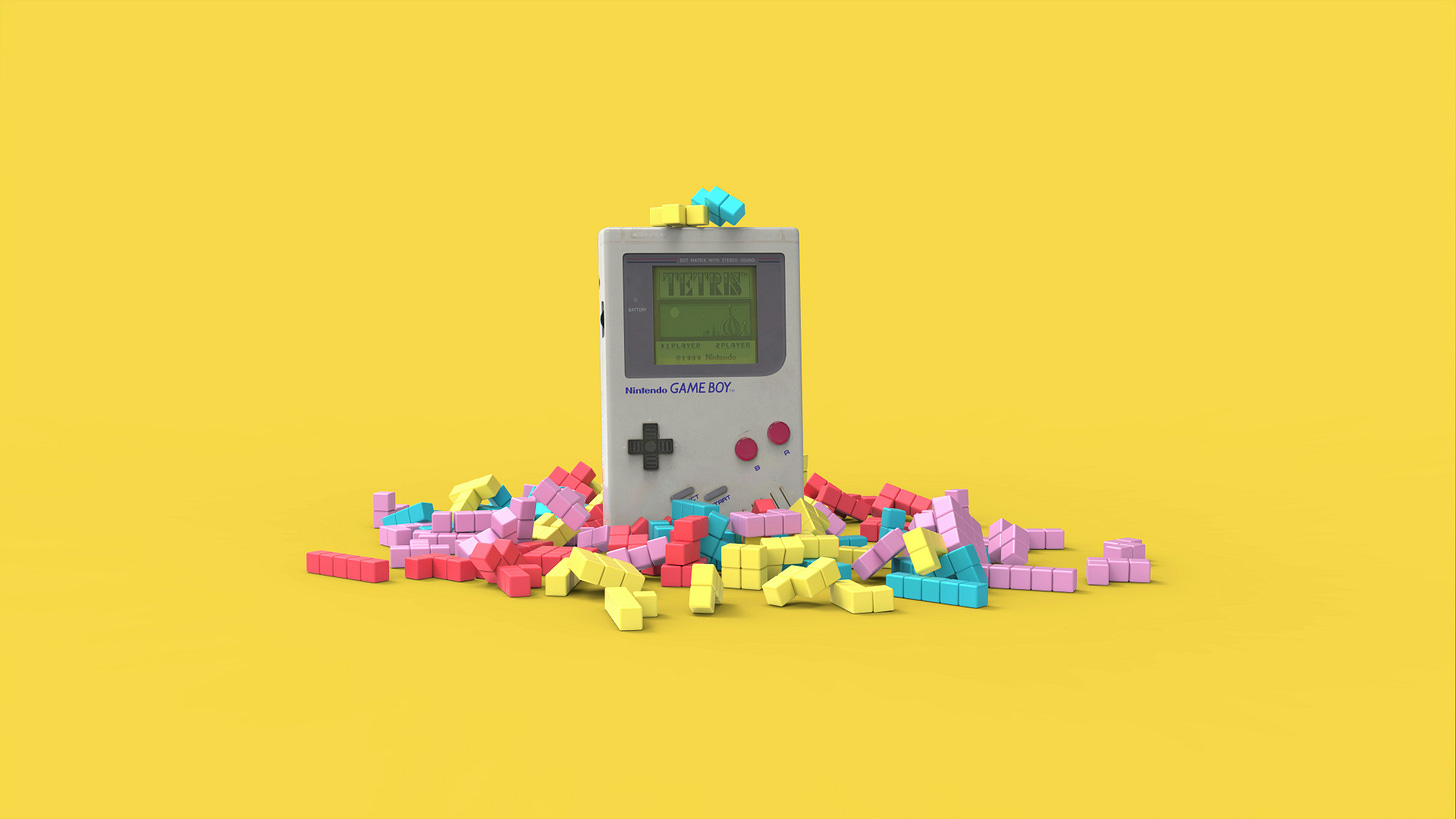
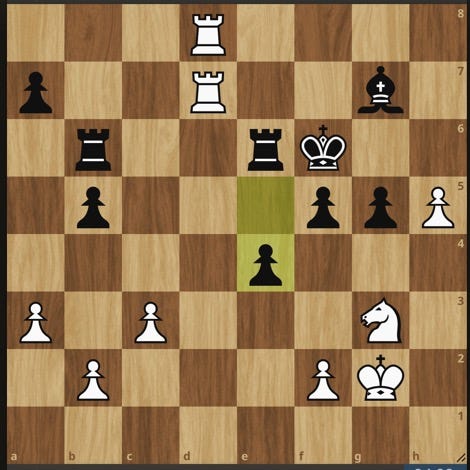
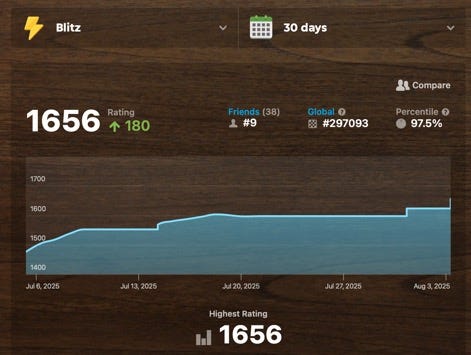
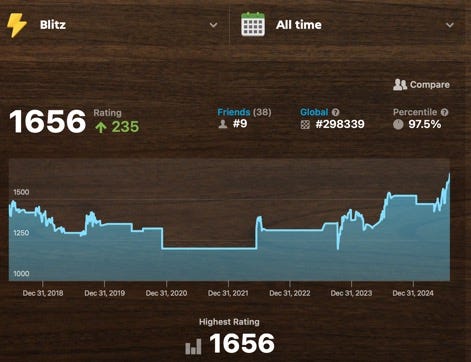
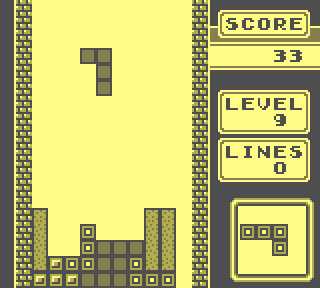
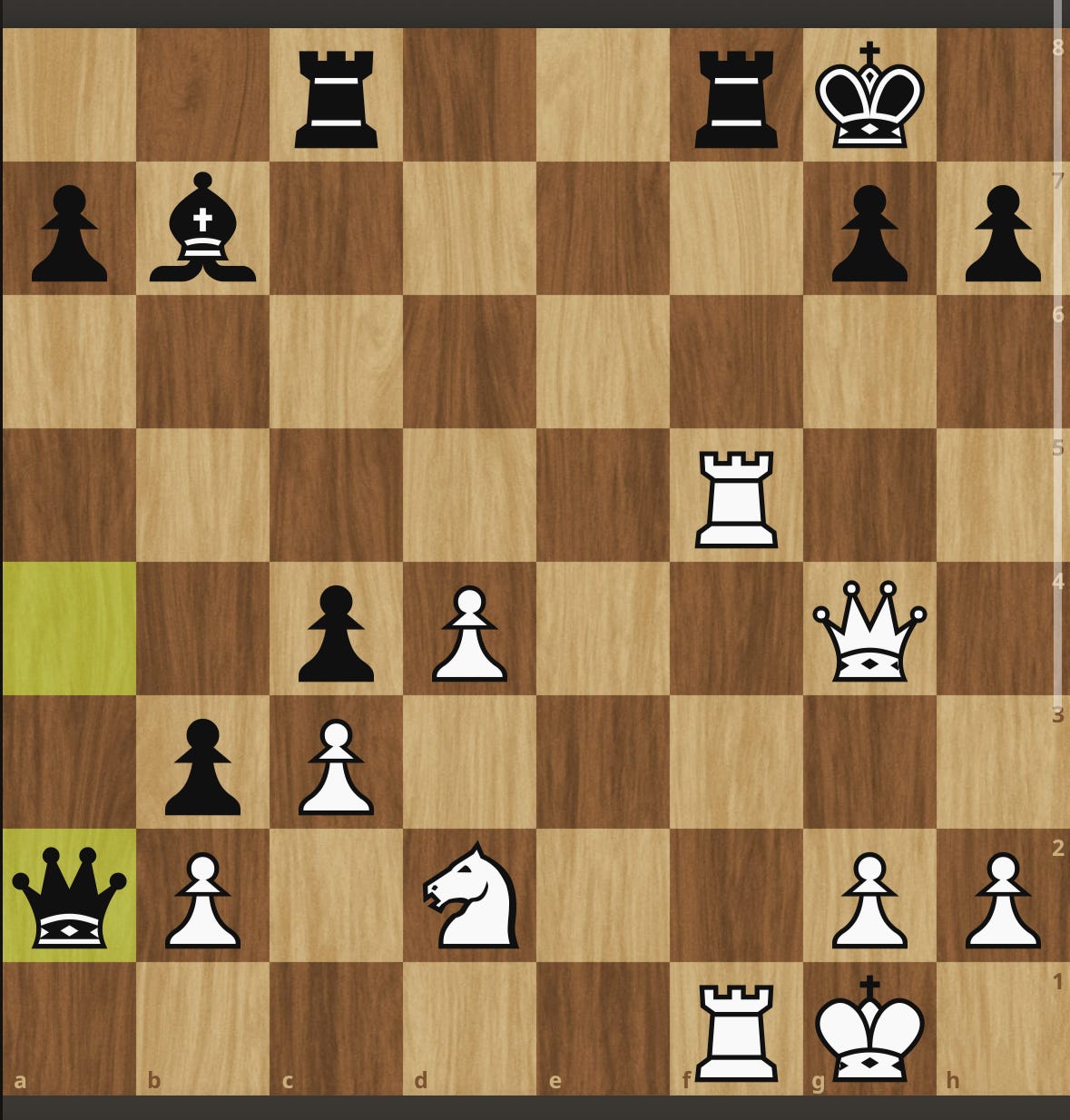
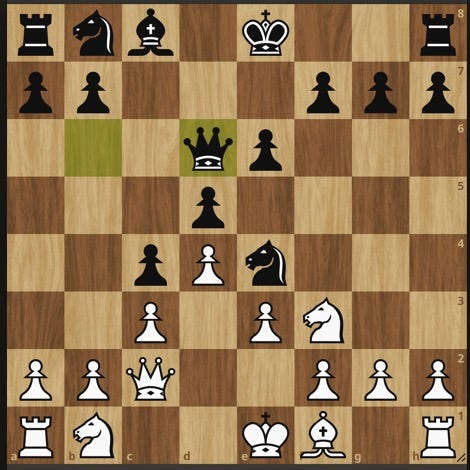
A few points worth discussion
1) Yes, I experienced similar effects when I studied (solved) hundreds of easy tactics with the solutions writing down in my paper notebook. The general idea is not to guess the moves (any moves!) nor click these on the digital board.
2) After solving approx. 1M puzzles at lichess (including repetitions) by Puzzle Storm + Puzzle Racers puzzles, I found out the tactical puzzles are close to infinite. I thought at some point I finally reach the mastery of basic tactical puzzles, but lichess database surprises me every month when they expand the puzzles increasing the number (now 5,5M puzzles).
3) At most games below 2200 lichess (rapid and blitz) whenever tactics decides then it is mostly 2-3 movers or a really nasty strategical blunder that leads to the collapse of the position.
4) Mastering basic tactics is especially useful if we play the fast time control games (blitz and bullet) or we get into a serious time trouble and we have extremally limited time to make a safe move or exploit the opponent's tactical mistake.
5) It is very important to learn tactics including the moves based on powerful threats , but not moves with checks or captures. They are pretty easy to miss, especially as we learn to search for CCT model and the "threat" is the most difficult one as it too broad and complex. Captures and checks and concrete ones and they can be listed very quickly while recognizing "threats" requires a different approach (at least to me).
6) In a practical chess (below a chess title threshold) it is important to focus on training the most common tactical ideas (themes) and every month trying to explore the depth of the specific theme and connect these with other ones. Some of the themes seem easy in theory, but they can be really difficult and tricky in practice. Let's say we can combine PIN with X-RAY and the intermediate move idea (intermezzo) - it gives the specific positions that drains tons of energy unless we studies such positions to the core.
Thanks a lot for writing down this article and sharing with the community Nick! I really enjoyed it and you express the ideas in a very clear manner with the links to the reasearch and studies: super valuable stuff!
Another great article Doc. Please keep them coming because your writing is clear, concise and right on point for us "Adult Improvers". A bit of clarification if you do not mind.
Clarification - In the article you mentioned "easy mode" tactics, is this in reference to the "Difficulty Setting" in Lichess Puzzles? Thanks again Doc.